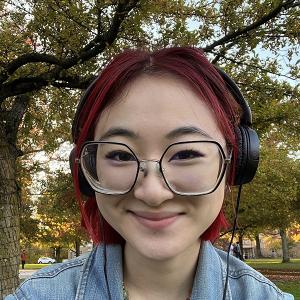Oberlin Blogs
Part 1: Dorm Away from Dorm
May 1, 2020
Olivia Huntley ’22
Out of all the unique features of Oberlin College, the dorms are one of my favorites. When I was a prospective student, I felt so excited by all of the options—from co-op living to program or theme housing. Oberlin allows students to use housing placements to build smaller campus communities. Early on, I knew program housing was right for me.
Program housing at Oberlin consists of 10 identity- and language-based dorms that bring together students with a shared investment in particular cultural or linguistic study. The Program Houses include Allencroft (Russian House), Bailey (French House), Baldwin Cottage (Women and Trans Collective), Harvey (Spanish House), Johnson House (Hebrew Heritage House), Kade (German House), Lord-Saunders (Afrikan Heritage House), Price (Third World House), Quadrangle (Asia House), and Zechiel House (Latinx Heritage House).
During my first year at Oberlin, I lived in Third World House. In Third World House, I made some of my first friends at Oberlin and got an invaluable opportunity to learn about Oberlin’s history. This past year, however, I decided to apply to live in Afrikan Heritage House, commonly referred to as A-House or The House. My decision to live in The House made all the difference.
The House has shaped my Oberlin experience in so many ways. From the monthly talent show we call Soul Sessions to late nights cooking in one of the two dorm kitchens, The House always seemed to have everything I needed. When I had a meal plan with Campus Dining Services (CDS), I could find some of the best food on campus in the A-House dining hall. Every time I went to the dining halls, the staff would greet me while some of the best playlists made by house director Candice Raynor blasted through The House speakers. When I had a question for an upcoming paper, I could walk to the A-House library and work with some of my peers from the Writing Center. If I needed a last-minute outfit for an event, I could rely on my dorm mates to supply one either from their own closets (!) or from the Free Boxes that tend to overflow with beautiful items residents decided to give away.
The House is more than a dorm: it is a cultural center for black life on campus.
Professors regularly use The House as a space to communicate with students, holding outside office hours over dinner. When black alums return to campus, The House is often used as a space to welcome and celebrate them. The connections made at The House are ones that frequently last for life—just ask some of our alums!
Since our community is tight-knit, we took the news of the move-out hard. For some, they had finally acclimated to their first year at Oberlin. Others worried about the friends they wouldn’t see next fall because of graduation or study abroad. While we tried to wrap up our final days of classes, we also had to plan for our departure. Many students were unable to find a way home on such short notice and relied on other community members to get home before the crisis hit in full.
Boxes upon boxes had to be packed and suitcases were stuffed to the brim. Each of us had to figure out our way to wrap up our lives at Oberlin. My time right before leaving and during spring break was spent with a community willing to help guide me through. Though we were socially distanced, we didn't have to be emotionally distant. Despite all the confusion, I was presented with a few final, in-person lessons.
Lesson 1: When you’re in doubt, reach out. In the last weeks at The House (and far before that), students often stepped up to take care of each other. If someone was sick, they often relied on the community to help them access medicine. If someone needed food, then another student would gladly share their stash of ramen or most recent DeCafé meal. However, even though I knew people were willing to help, I didn’t want to ask. Packing had me overwhelmed. I can’t seem to figure it out. Whether I simply bring too much stuff, or I wait until the last minute, I am rarely packed on time. Combined with my uncertainty and fear about the pandemic, I quickly found myself overthinking everything and doing next to nothing.
Finally, I talked to my resident-friends and found that many of them felt the same way: nervous about what was to come and sad to go so soon. Together, we were able to get ourselves to start packing and enjoy the time we had with each other. Whether it was a last-minute feast or a quickly planned movie night, we used quality community time to plan for whatever was ahead. We encouraged each other to reach out if anyone needed anything, which made packing a lot easier. Whether it was a quick goodbye or packing tape, I could count on them to be there.
Lesson 2: If you don’t need it, let it go. On a less sentimental note, packing showed me how much stuff I keep that I just don’t need. When I filled half a box with old papers and CVS receipts, I realized that I needed to get better at letting go of stuff. I quickly understood that there was no way to bring everything home with me. Something had to go. Many of my fellow students also came to that same conclusion, as the Free Boxes were beyond full.
Lesson 3: It isn’t that hard to keep in touch. Confession: I am not the ‘‘stay-in-touch’’ type. I am not even the ‘‘periodically-checks-in-at-2-am’’ type. No, I am the ‘‘see-you-when-I-see-you’’ type—which is not ideal for an age of social distancing. Leaving Oberlin and preparing for my courses going online forced me to work on my digital communication skills. Whether it was answering Zoom or Facetime calls, each was completely necessary.
At first, I was apprehensive. I‘m not exactly fond of video calls. However, as time went on, I found myself appreciating video calls. I enjoyed getting to see people instead of just hearing their voices. A simple text message goes a long way towards letting me know that people I care about are still OK. While I still have a ways to go to improve, I plan to try. Digitization isn’t as bad, or difficult, as I thought.
Part 2: Cyberspace will focus more directly on how digital Oberlin has taught me new skills. Whether it is the importance of knowing how to share a screen or finally responding to emails in a timely fashion, social distancing has taught this old dog some very ‘‘new’’ tricks. I might not ever be famous on Youtube or Tik-Tok, but I think I‘ve entered the digital age.
Similar Blog Entries

Stockholm Memories
March 31, 2025
These moments, where the marvelous and the everyday meet, are a serendipity I didn’t know I was missing.

